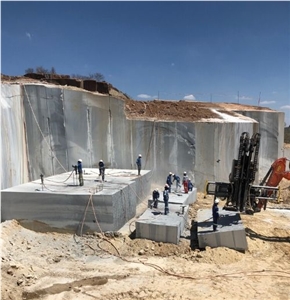Unearthing the Rich Background and Lasting Practices of Granite Quarrying
As we depend on the precipice of uncovering the complex tapestry of granite quarrying, a trip through time reveals not just the physical act of removing stone but likewise the social and historic value woven right into the extremely fabric of this technique. From the ancient beginnings that laid the structure for modern quarrying techniques to the sustainable practices that are forming the future of this industry, each chisel mark on granite surfaces narrates waiting to be discovered (granite quarries in south africa). The heritage of granite quarrying stretches much beyond simple removal; it is a testament to human ingenuity, durability, and the long-lasting allure of this marvelous stone
Old Origins of Granite Quarrying
Going back to old people, the technique of quarrying granite has been an integral component of human background and architectural improvement. The earliest proof of granite quarrying dates back to ancient Egypt, where large pyramids and elaborate sculptures were crafted from this durable rock. The Egyptians made use of primitive tools to extract granite blocks from quarries, showcasing the importance of this product in their huge building and constructions.
Progressing in background, the Greeks additionally made considerable contributions to the quarrying of granite. The Greeks used granite in various architectural marvels, such as holy places and statuaries, showing their skill in shaping and sculpting this sturdy rock. The Romans additionally refined the methods of quarrying granite, utilizing advanced devices like chisels and hammers to extract and form granite for their famous frameworks.
With the centuries, the technique of quarrying granite has developed, with modern-day innovations improving performance while keeping the classic charm of this natural rock - granite quarries in south africa. From ancient civilizations to contemporary contractors, the legacy of granite quarrying remains to form our world
Development of Quarrying Techniques
The development of quarrying techniques has actually been noted by a continual development towards higher performance and accuracy in extracting granite. Early quarrying techniques included hand-operated labor with standard tools such as knives, hammers, and wedges to draw out granite blocks from the earth.
Innovations in computer-controlled devices and 3D modeling have enhanced quarrying operations, leading to very little environmental impact and boosted sustainability practices. As the demand for granite proceeds to increase, the evolution of quarrying strategies continues to be important to meeting market needs effectively and sustainably.
Social Significance of Granite
Granite holds a profound cultural importance throughout different human beings as a result of its long-lasting existence in architectural work of arts and admired browse around this web-site monuments. From the marvelous pyramids of Egypt to the complex makings of the Angkor Wat temple in Cambodia, granite has been a material of choice for expressing splendour and long life in cultural heritage. In ancient Rome, granite columns embellished temples and public structures, signifying stamina and durability. The social relevance of granite extends past its physical features; it symbolizes resilience, security, and timelessness, making it a sign of withstanding legacies and traditions.

Sustainable Practices in Quarrying
Among the abundant background of granite quarrying and its cultural importance lies a growing focus on lasting techniques within the sector. see this website As ecological understanding and issues concerning source exhaustion have actually enhanced globally, the quarrying industry has actually significantly embraced sustainable methods to minimize its influence on the environment and surrounding communities.

In addition, reclamation and recovery of quarry sites post-extraction are essential to lasting methods. By recovering quarried locations to a natural or helpful state, such as developing wild animals environments or leisure rooms, quarriers can balance out the environmental impact of their operations and contribute favorably to the local ecological community.
Tradition of Granite Quarrying
With a historic background soaked in craftsmanship and industrial progress, what continue reading this sustaining influence has granite quarrying left on the landscape of modern culture? The tradition of granite quarrying transcends mere removal methods; it has formed building wonders, city landscapes, and cultural heritage worldwide. The durable nature of granite has made it a recommended choice for monoliths, structures, and facilities, standing as a testimony to the skill and virtuosity of quarry employees across generations.
Moreover, the economic footprint of granite quarrying can not be forgotten. The sector remains to provide job opportunity and drive local economic climates in areas where granite extraction prevails. It has actually also spurred technical developments in quarrying strategies and devices, causing much more efficient and lasting techniques.
In regards to sustainability, the legacy of granite quarrying consists of initiatives to reduce ecological influences with recovery projects and liable source management. By stabilizing financial interests with environmental stewardship, the market makes every effort to make certain that future generations can proceed to gain from this long-lasting all-natural source.
Verdict
